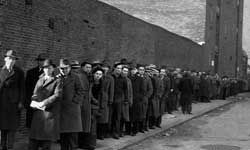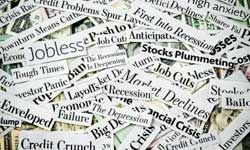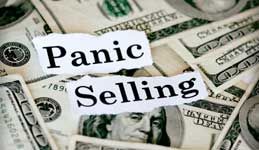A mention of the Great Depression -- the classically cited reference when it comes to the modern big daddies of financial panic -- instantly calls to mind images of Black Thursday, the Dust Bowl and the vast shantytowns nicknamed "Hoovervilles." Millions lost their jobs in the ensuing economic chaos. In 1927, the unemployment rate was about 4.1 percent; by 1933, that number had skyrocketed to 24.9 percent [source: Ayers].
Although the devastating stock market crash on Oct. 24, 1929 -- and the subsequent plummet that followed a few days later on Oct. 29 -- started the ball rolling in a big way, there were many factors responsible for triggering the Great Depression. Among them were the concentration of wealth in the hands of the few, an overproductive agricultural sector, poor banking and investment practices, a fragile international economy and land speculation.
Advertisement
But the 1929 financial panic and resulting chaotic crisis is far from unique in U.S. history. Indeed, our economy crumbles and rebuilds itself with astonishing regularity. Simply examining the historical record demonstrates how the current recession was hardly surprising -- and not just when it comes down to timing. Many of the factors that cropped up a few years ago and contributed to the downturn have reared their ugly heads before: real estate booms, bad banking practices, increased credit lending. No, today's Americans are not as unique as they might sometimes suppose.
In this article, we'll delve into some of the more notable financial panics that have plagued Americans over the years. And although it's not a comprehensive list, it will give you a good look at the way our economy bobs like a bottle on the ocean waves.


